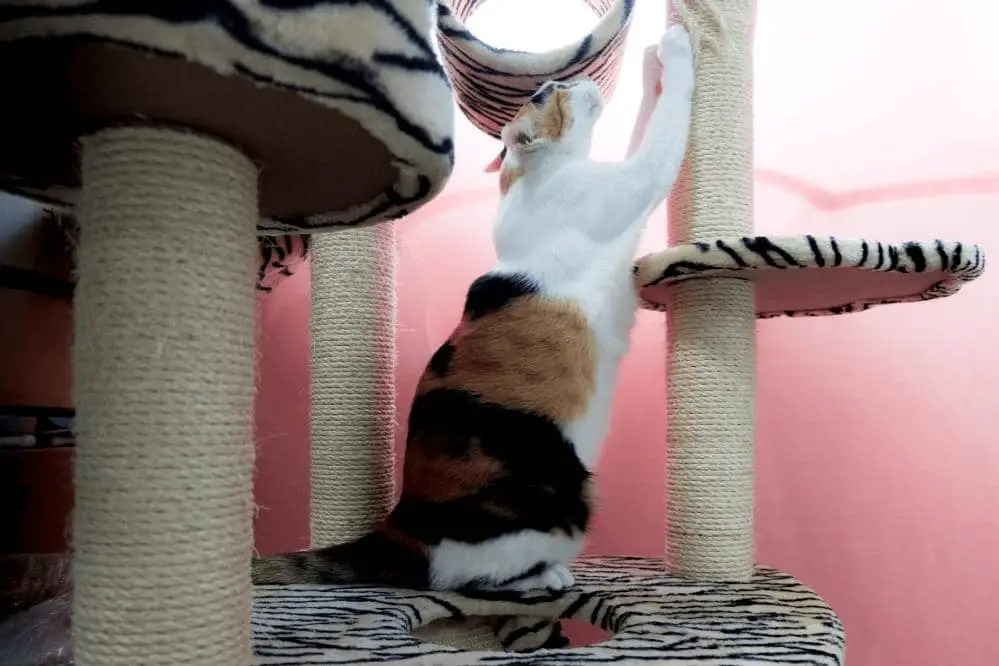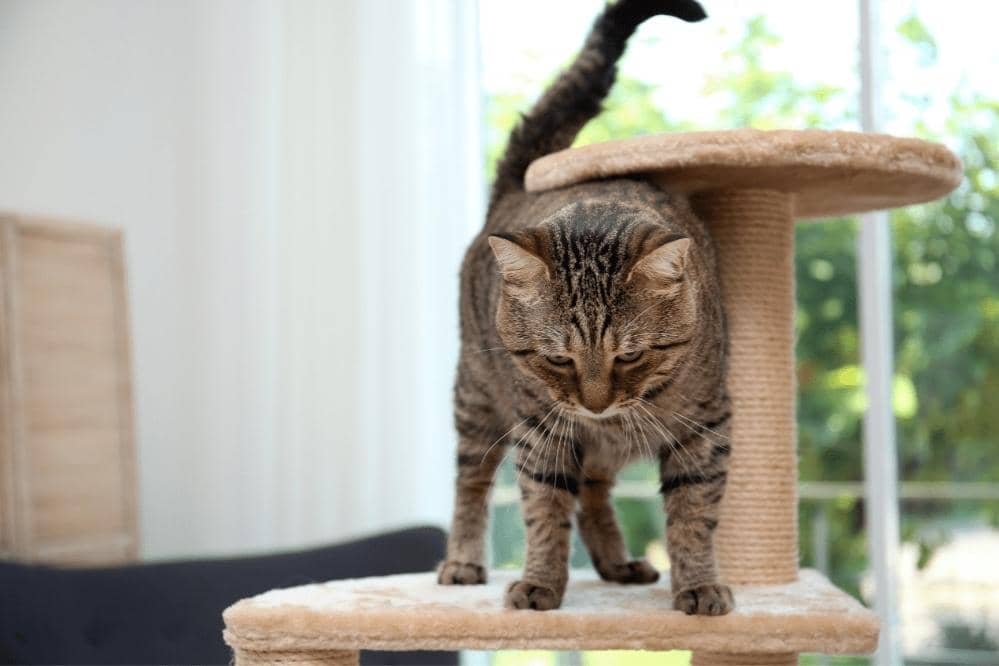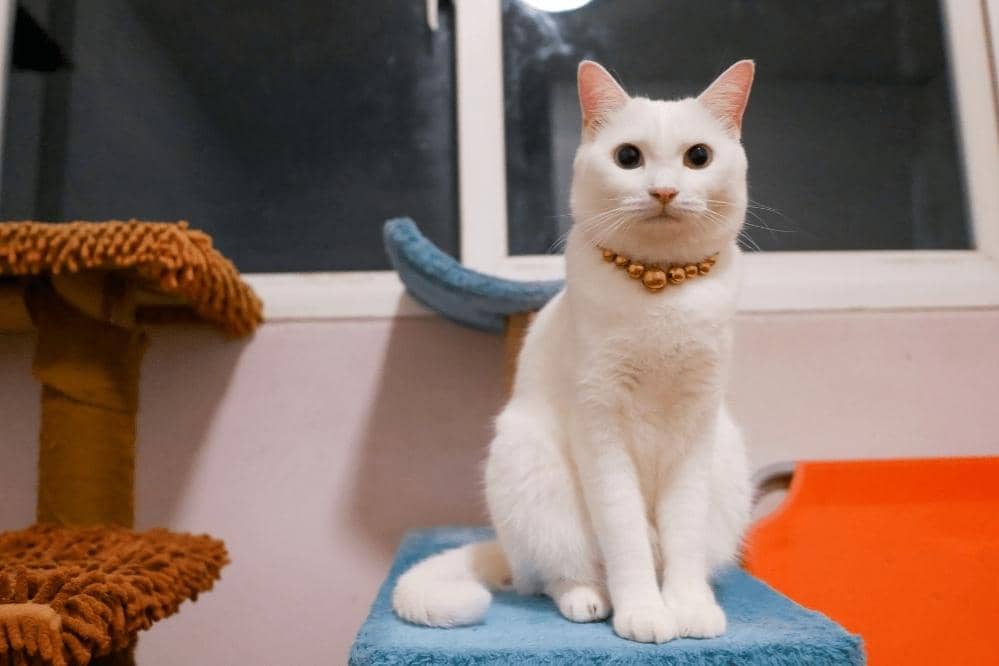Can Declawed Cats Still Climb Cat Trees?

Declawing cats is a practice that has become more and more frowned upon as people learn the reality of the procedure. Getting a cat declawed is not akin to getting one’s nails clipped permanently, but it is actually much closer to getting one’s finger amputated at the first knuckle under the nail. Because declawing a cat is closer to a finger amputation, if you have a cat who has already been declawed, you may begin to wonder and worry about the cat’s ability to climb cat trees and play with toys as other cats would.
Unfortunately, the answer to this question is not exactly a simple one. For instance, there is a large difference in functionality between a cat who has only gotten its front claws removed and a cat who has been entirely declawed. A cat who still has its back claws can easily rely on those for many activities that require claws, but a cat who has no functional claws may not be able to participate in other activities. A cat’s claws are a lot more than just their weapons against prey. They are what your cat uses to cling on to the world around it, whether that is climbing a cat tree or effectively hunting its prey.
It Depends on the Number of Claws Left
The biggest hurdle in the way of answering this question is that you need to know how many claws your cat has left. Some people will only declaw a cat’s front paws, as these tend to be the most problematic. This will leave your cat with its hind claws still remaining. Because cats are highly adaptable creatures, your cat will be able to change its actions to suit its body. This means that while your cat may not climb as efficiently as a clawed cat, it can still make its way up a cat tree. Instead of relying on the front paws, the cat would instead use its back paws for support and for assistance pushing the cat up the tree. Depending on the height of the tree and just how easy it is for your cat to grip with its hind claws, it may have some trouble getting up and down efficiently, and because of this, it may ultimately decide that climbing the cat tree is no longer worth the effort.
With that being said, if your cat doesn’t have any of its claws left, then it cannot climb cat trees. No matter how optimal the surface of the cat tree is for climbing and gripping, a fully declawed cat does not have the fingertips to “grasp” the tree anymore when it climbs. This is one of the reasons why declawing a cat is so highly frowned upon, as it can take away your cat’s ability to climb. For many cats, this is a vital part of the cat’s life and personality. A fully declawed cat cannot climb cat trees the way other cats can. It would have to leap from platform to platform on the tree to be able to reach the top, which is not the same as climbing and it may not provide the same satisfaction for your cat.
Can You Help Your Cat?
If you have a cat who is declawed, and you see it struggling to reach the top of your cat tree, you may be able to help it out and give it a little bit of a boost to its self-esteem. Of course, this is only recommended if you want your cat sitting on top of the cat tree, as in some houses, this can lead to mischief as your cat leaps from the top of the tree to other places in the house where the cat is not supposed to be.
If your cat still has its back claws, you can consider purchasing a cat tree that has been shown to be very good for gripping and optimal for a cat who genuinely enjoys climbing. Having that extra support on your cat’s back claws can be quite helpful, as it can take some of the physical stress away from trying to climb the cat tree. In a similar vein, you may also want to add more places where your cat can rest on the tree after it has tried climbing it. Depending on the procedure and how your cat has healed, climbing may become a painful process for your cat, so providing places where it can take frequent rests while climbing will be important. To have a good idea of where these rest places should be on the tree, you may want to lure your cat to try climbing the tree a few times so that you can gauge when your cat seems to get tired of climbing. If you do this, you may find that your cat will have a brand-new place to sit and watch the rest of the house from, which is something that many cats can appreciate.
If your cat is completely declawed, then there isn’t much that you can do to help your cat climb the tree, as your cat is no longer able to climb things. If you notice that your cat still has a desire to sit up high so that it can watch over the rest of your home, and you are okay with your cat having a high-access place to sit, you may want to consider adding places where your cat can jump from to the tree. This will allow your cat to scale the cat tree by jumping from platform to platform, rather than climbing up and down the “trunk” of the tree. While it may not be the same amount of satisfaction from your cat when it reaches the top, most cats will be more than happy enough to sit on top of their cat trees where they can watch the rest of the house from.
These are just a few of the ways that you can work with your cat, whether it is fully or partially declawed, to help it live a relatively normal cat life.



